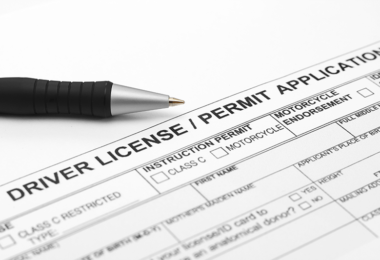Home / Modules / Components / GDL for all novice drivers younger than 21 / Key research findings
Key research findings
- Young drivers delay licensing and are aging out of GDL requirements. Research studies show that many young drivers in the U.S. bypass some or all of GDL requirements, and these older novices in the U.S. are not a small group. Nationally representative surveys have revealed that about one in four (25%) of young adults aged 18 and older have not yet begun the licensing process.2 In addition, it has been estimated that more than one-third (36%) of beginners in the U.S. will be licensed after their 18th birthday and thus be exempt from most or all GDL requirements beyond the learner stage3
- 18 to 20 year olds are an important target group. Studies in New Jersey and California have indicated that 18 to 20 year-olds have crash trajectories similar to those of 16 to 17 year-olds (initially high, rapid decline) whereas novices age 21 and older have initial crash rates that are lower than in younger novice groups and have less of a learning curve.4
- GDL programs can reduce crash involvement among older novices. In the United States, New Jersey applies full GDL rules to novices through age 20. New Jersey rules include a 6 month learner stage, plus night and passenger restrictions for one year, and lesser requirements of a 3 month learner stage for older novices. An evaluation of the GDL program in New Jersey revealed positive effects for 18 year olds in relation to all crashes and driving during restricted hours and with passengers.5 Further research, however, is needed to establish the safety benefits for New Jersey novices older than age 18.
- Studies in Canada and Australia have also confirmed that GDL reduces crashes among older novices. Mayhew et al. (2005), in a review of GDL evaluations in Canada, describe study results from Nova Scotia and Ontario showing reductions in crash rates among older novice drivers; studies in British Columbia and Quebec found safety benefits for all novice drivers. In an evaluation of the GDL program in Victoria, Australia, Healy et al. (2012) reported significant reductions of 23% in the casualty crash involvement and 31% in the fatal and serious injury crash involvement of drivers age 18 to 20 (when first licensed) in the first year of holding a probationary license when compared with a control group. The relevance of these findings to the application of U.S. style GDL policies to older novices is yet to be determined.6
- Notably, the policy in New Jersey accounts for the possibility that some teens may delay licensure until age 18 or older to avoid participation in GDL programs.
In addition, research shows that the New Jersey requirements were preferred according to a survey of 17-19-year olds in New Jersey. Results revealed that more than three-quarters (77%) of teens approved of the policy.7 - There are other options available to extend GDL to older novices, but the effectiveness of these options is less established. Indiana and the District of Columbian have policies similar to those in New Jersey, applying to novices younger than 21. In Maryland and Maine, only the learner period may be applied to novices aged 18 or older. More recently, Connecticut also adopted a 3-month learner requirement for beginners aged 18 or older. Another option involves not permitting young persons in the GDL program to graduate to full licensure until they have completed the requirements if they have not done so before reaching age 18. The size of this “premature graduation” group is unknown. Additional options that could be considered include requiring supervised driving hours, prohibiting electronic devices, and night driving restrictions.
- There is strong public support for the application of GDL to all novice drivers. A national survey of state agencies responsible for GDL in 2016 revealed that more than 3 out of 5 respondents (65%) favored the application of GDL to all novices.8 In addition, only 1 in 4 respondents (25%) reported that GDL should be limited to drivers younger than 21 years.





